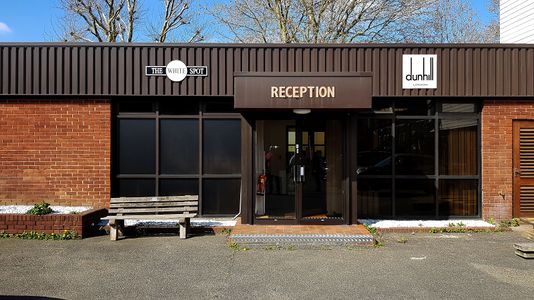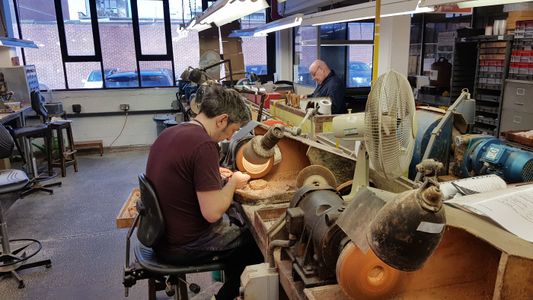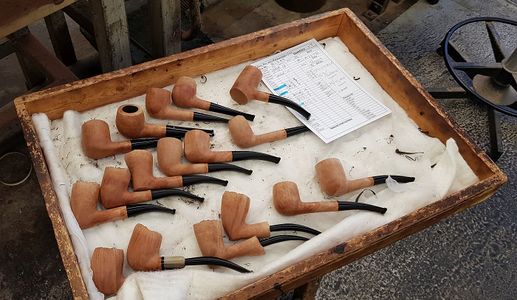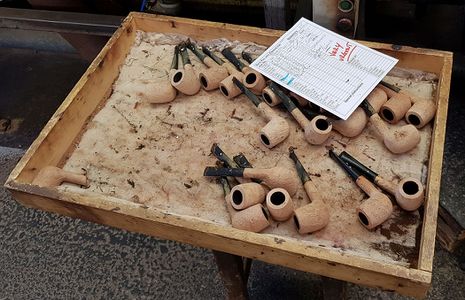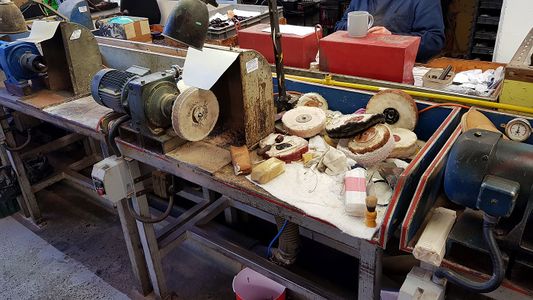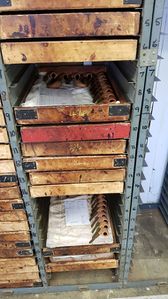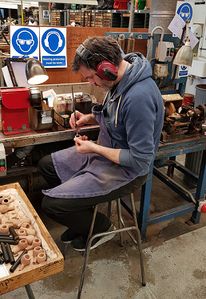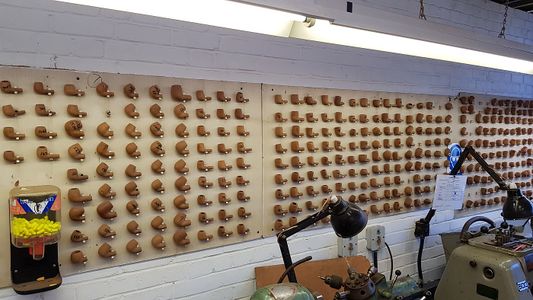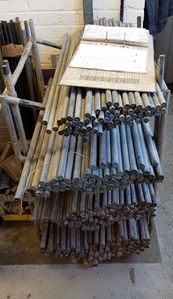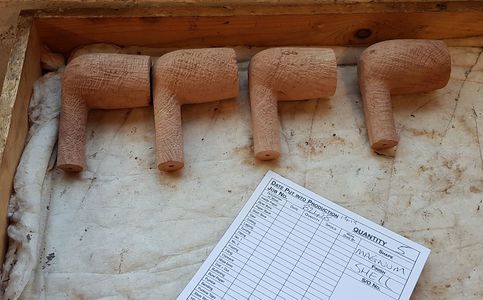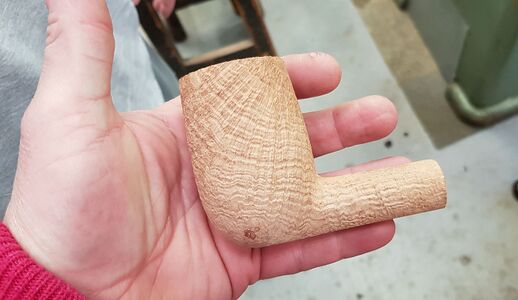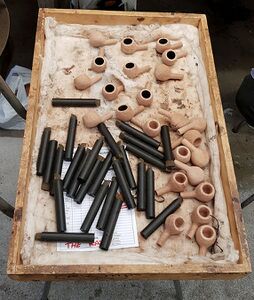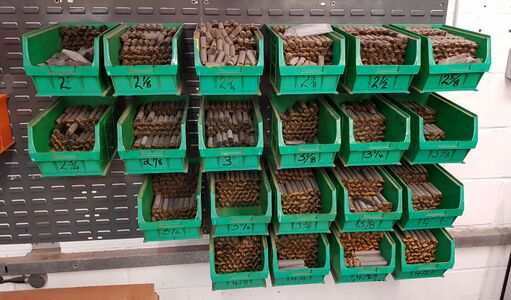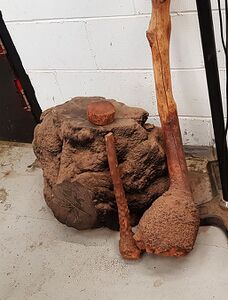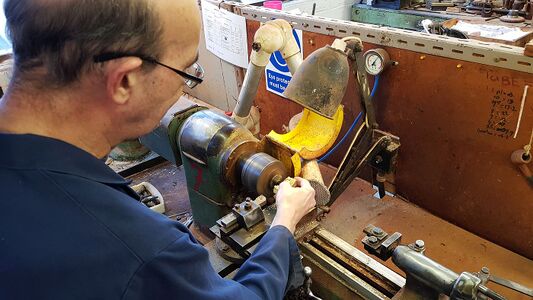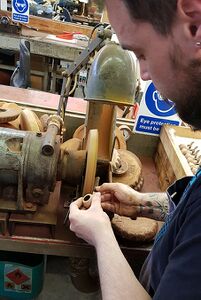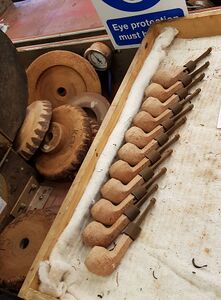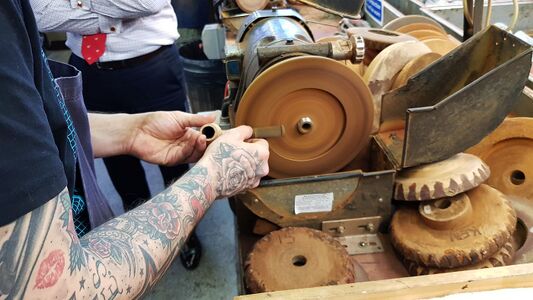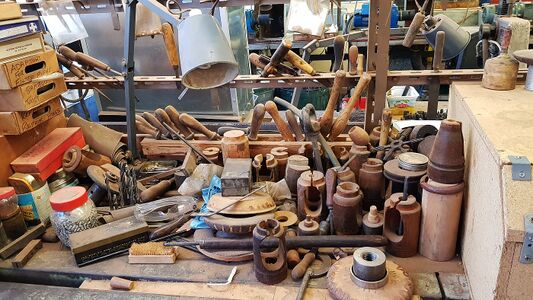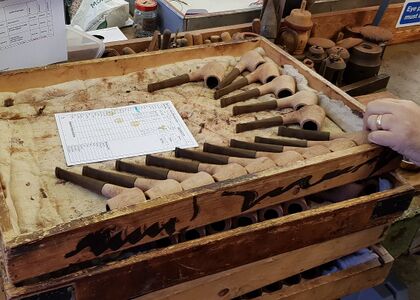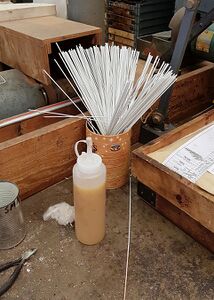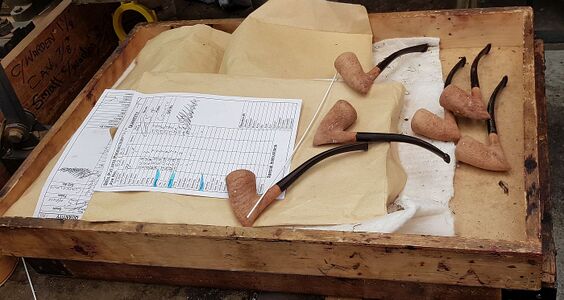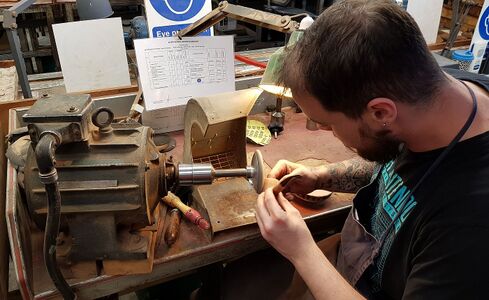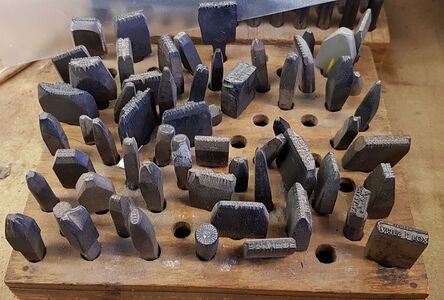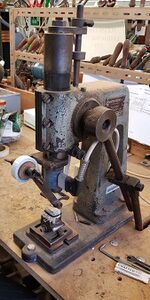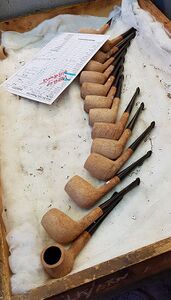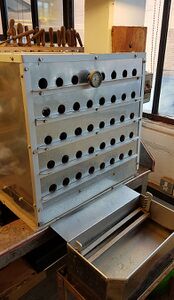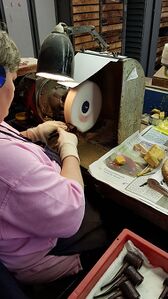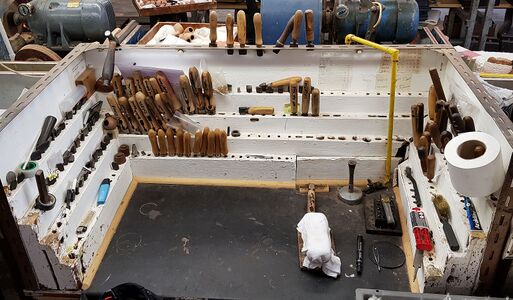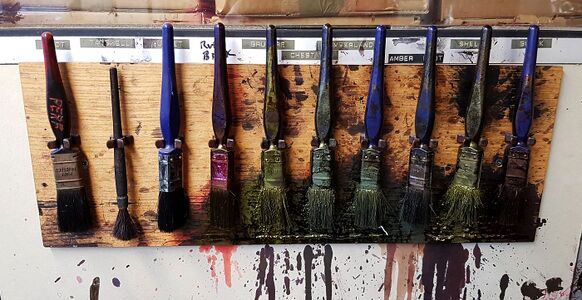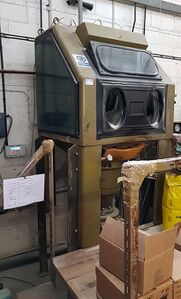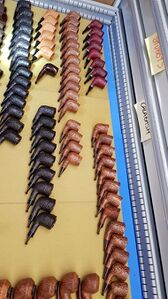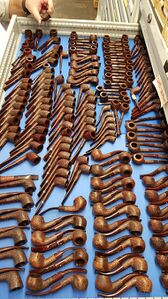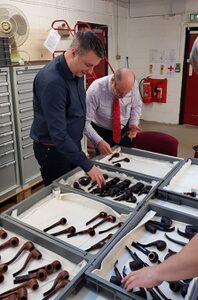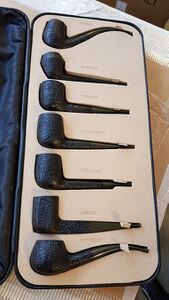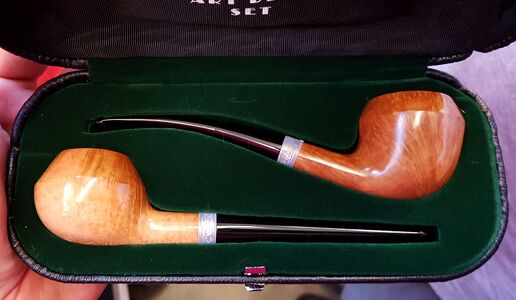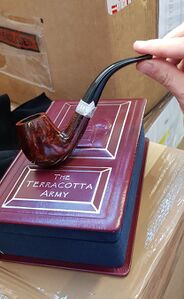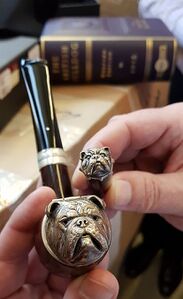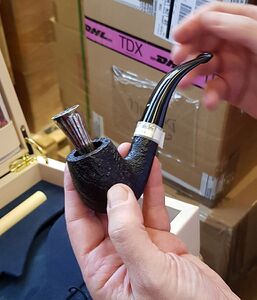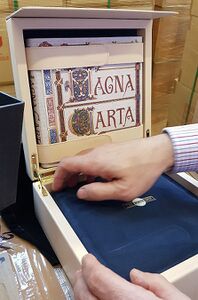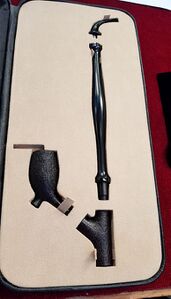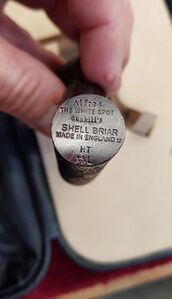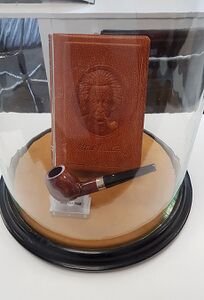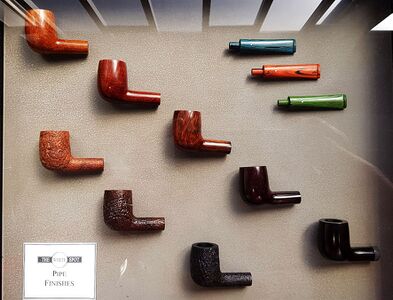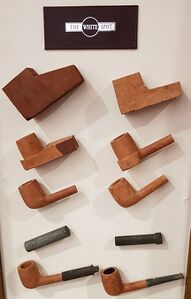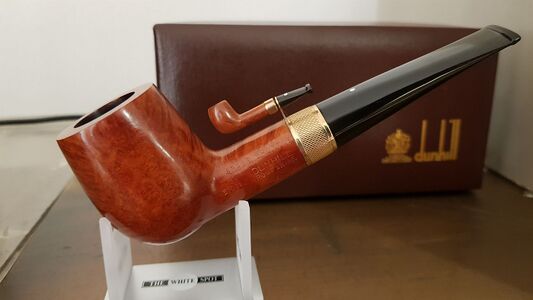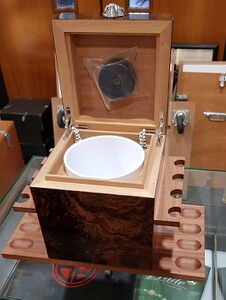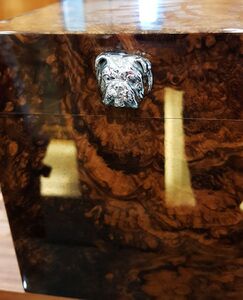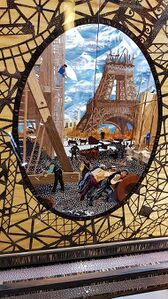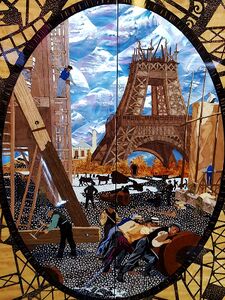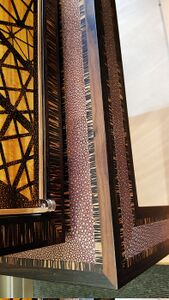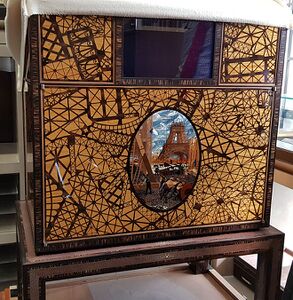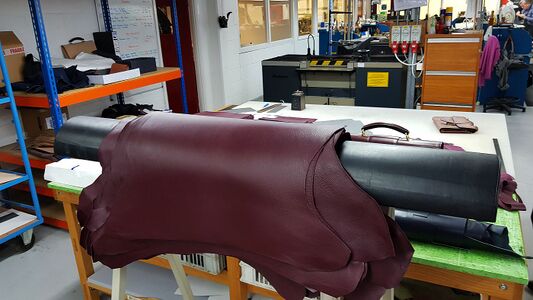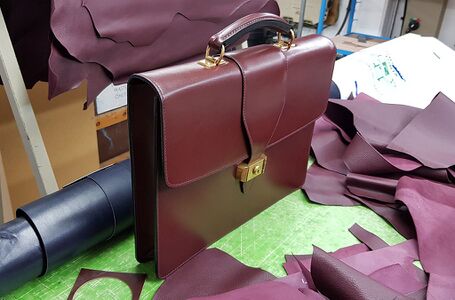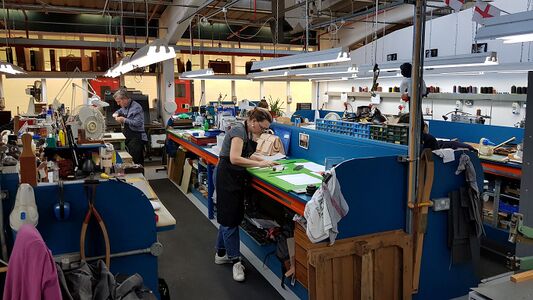Dunhill Factory
Traditional techniques [1]
Tatsächlich gibt es bei der Herstellung einer Alfred-Dunhill-Pfeife neunzig Stufen. Tatsächlich ist die Umwandlung von Rohstoffen in fertige Produkte dramatisch. Es beginnt mit einem Stück Wurzel der Baumheide. Die Wurzel wächst normalerweise an der Mittelmeerküste, insbesondere in Algerien, Marokko, Sizilien und Korsika, sie wächst unter trockenen Bedingungen und kann bis zu hundert Jahre brauchen, um die richtige Form und Größe für die Pfeifenherstellung zu erreichen. Einheimische Landleute graben die Wurzel aus und verkaufen sie an Bruyère-Händler. Sie wird dann getrocknet, abgelagert und in die grobe Form einer Pfeife geschnitten (die als Ebauchon bezeichnet wird). Beim Ablagern kommt Alfred Dunhills am besten gehütetes Geheimnis zum Einsatz. Durch einen Ablagerungs-Prozess werden Saft und Feuchtigkeit aus dem Holz entfernt, so dass beim ersten Rauchen der Pfeife keine Bitterkeit durch eventuelle Rückstände im Holz zurückbleibt. Dies verleiht einer Alfred-Dunhill-Pfeife nicht nur den Vorteil, von Anfang an süß zu rauchen, sondern verleiht jeder Pfeife auch eine längere Lebensdauer.At the factory, craftsmen using turning machinery create the basic shape of the howl and stem. It is then paired with a solid piece of vulcanite from which the mouthpiece is made by hand. The bowl and stem are then further worked to create exactly the right shape. This is ‘followed by the many polishing processes, using a range of materials, including pumice, sand, oil and beeswax. ‘People often think our pipes are varnished, because you get such a high sheen on them, but in fact it is just wax,’ explains Philpott. ‘There are layers and layers of wax put on and taken off, put on and taken off.’
With limited mechanisation, and reliance on a number of traditional techniques, the manu facturing process makes stringent demands on the craftsmen in the Walthamstow factory, all of whom are overseen by master craftsman Steve Wilson. ‘It’s not only manufacturing skills that they have, it is also natural creativity,’ says Philpott. ‘No two pipes are ever the same because every individual craftsman will have his own way of achieving a balance and a look. You can give two guys in our facto ry the same raw materials and a them to make a pipe, and two pieces you would out of it would be slight ly different in balance weight and colour.'
The manufacture of most of today’s products - cars, sweets, compact disc players - is mostly an exercise in creating standard products with minimal wastage. Making a Dunhill pipe is a very different matter. For example, one sack of briar wood containing 100 blocks will probably only contain one or two blocks good enough to become an Alfred Dunhill pipe. To make such raw material costs viable, the remaining blocks are then used for other pipes, hence the logic of pipe makers owning a range of less expensive pipe brands in addition to their premium line.
The unpredictability factor continues throughout the manufacturing process, according to Philpott. ‘There aren’t many production operations where you don’t actually know what you are going to get. We’ll start a bowl and mouthpiece at the beginning of the process, it will be graded according to its grain, and we'll know what colour finish we want to put on it to enhance its grain. But as it goes through the polishing process, the grain pattern can change. So you might set out to produce a pipe with a natural brown, bruyère finish, but you find by the end of the process that the grain has improved so you can put a different finish on it.
Note: All the stems were made by hand until 1976. They have since been machine made due to labor costs.
The current Dunhill factory "The White Spot Division" [2]
Dunhill Factory Tour
References
- ↑ The Worldwide Pipe Smoker's Magazine, by Tim Rich. Vol. 2, 2nd Semester 1993. Published by Magazine Partners, The Netherlands. P.37-43. Courtesy Bruno de Figueiredo.
- ↑ Photos were taken by Radek Juza in recent visit (April 2019). The factory is located in a district in northeastern London, Walthamstow. Courtesy Radek Juza. In the same complex, there is a sector apart, the manufacture of leather artifacts.
